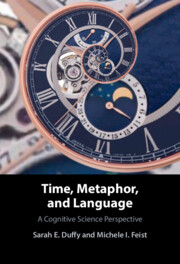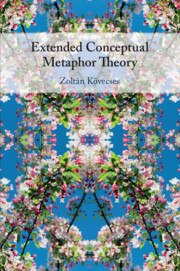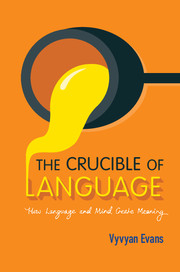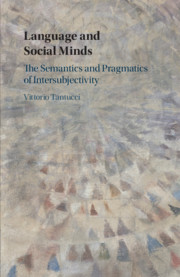Time, Metaphor, and Language
Across languages, time tends to be understood in terms of space. For instance, we might think of time as an unstoppable train heading towards us when we hear 'holidays are coming', or we might imagine time as a landscape that we move across as we 'approach the moment of truth'. In this pioneering book, Duffy and Feist bring together research from across disciplines to provide a more nuanced understanding of what metaphor is and how it underpins our conceptualizations of time. Illustrated with a wide range of authentic examples from natural language, the book offers a holistic understanding of metaphors for time, encompassing the varied ways in which people draw on spatial experiences, as well as the broader variety of 'human experience' on an individual level. In doing so, it highlights the importance of variation across cultures, across contexts, and across individuals for metaphoric conceptualization.
- Demonstrates a wide range of ways in which people's experiences of metaphors for time vary according to the context and the individual
- Uses authentic examples of language throughout the book
- Draws together research from across disciplines to flesh out our understanding of the online construction of metaphoric meaning
Product details
November 2023Hardback
9781107194038
209 pages
235 × 155 × 15 mm
0.46kg
Available
Table of Contents
- 1. Introduction:
- 1.1. Introduction
- 1.2. Overview
- 2. The theory of metaphor: from language to cognition:
- 2.1. Introduction
- 2.2. Metaphor as linguistic flourish
- 2.3. Metaphor comes into the mind
- 2.4. Metaphor as interaction
- 2.5. Metaphor as cognitive mapping
- 2.6. Metaphor as conceptual blending
- 2.7. Metaphor identification
- 2.8. Metaphorical realities
- 2.9. Time in the words of space
- 2.10. Chapter conclusion
- 3. Metaphor beyond language: testing the conceptual connections:
- 3.1. Introduction
- 3.2. Conceptual connections revealed by metaphor
- 3.3. Psychological reality of metaphors
- 3.4. Testing the space-time connection: Next Wednesday's meeting
- 3.5. Chapter conclusion
- 4. Time in space: cross-linguistic variation and metaphor:
- 4.1. Introduction
- 4.2. Orientation in space
- 4.3. Orientation in time
- 4.4. Motion in space
- 4.5 Moving into metaphor
- 4.6 Moving through time
- 4.7 Chapter conclusion
- 5. Conceptualizing time through language and space:
- 5.1. Introduction
- 5.2. Metaphor in the words we say
- 5.3. Changing words, changing metaphors
- 5.4. The hands as a window into the mind: evidence from gesture
- 5.5. Mapping cultural artifacts to temporal reasoning
- 5.6. Mapping metaphor to the world: disentangling lateral and sagittal mental timelines
- 5.7. When space skips language: the linguistic structuring of space and non-linguistic metaphor
- 5.8. Chapter conclusion
- 6. Bringing in the cognizer:
- 6.1. Introduction
- 6.2. Woeful or wonderful Wednesdays?: approach and avoidance motivations
- 6.3. Broadening the net: the multifaceted individual
- 6.4. Chapter conclusion
- 7. Time across paradigms:
- 7.1. Introduction
- 7.2. Focus through the lens of culture
- 7.3. Focus through an individual lens
- 7.4. Broadening the focus: generalizability of the effects
- 7.5. Chapter conclusion
- 8. Discussion:
- 8.1. Introduction
- 8.2. Summary of the arguments
- 8.3. Moving beyond time and space
- 8.4. The bigger picture
- 8.5. Concluding thoughts
- References
- Index.







